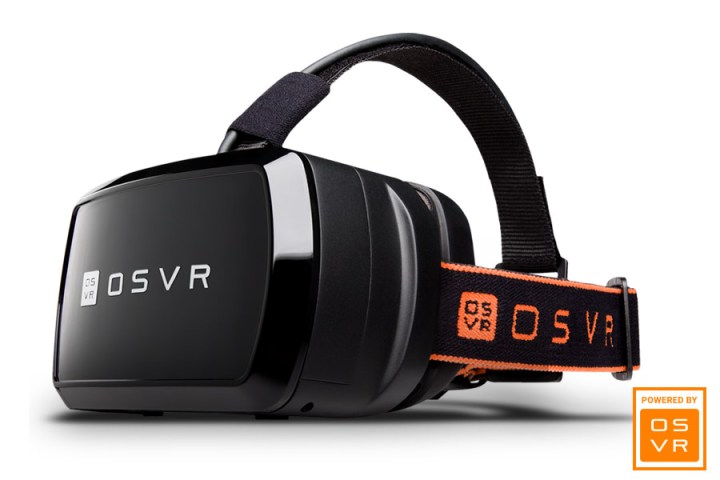
Termed the OSVR Hacker Development Kit 2 (HDK2), the headset sports a new pair of low-persistence OLED panels, with a combined resolution of 2,160 x 1,200p (the same as both aforementioned commercial headsets). They also operate at 90Hz, meaning the headset can support that 90-frames-per-second minimum that most developers are targeting with their VR experiences.
The field of view is listed by Engadget as 110 degrees.
We’re also told that it uses Image Quality Enhancement, or IQE, to help reduce what’s known as the “screen door effect.” That’s when the lines between pixels become visible due to the proximity of the user’s eyes to the displays, materializing much like the view you get when looking through a screen door. This was almost eliminated by both HTC/Valve and Oculus with their headsets, so likely much the same has happened with the OSVR headset.
Related: Acer puts its bets on open-source VR, touts support for Razer’s OSVR in latest gaming PCs
Everything else with the HDK2 is the same as the previous developer kit, though if you bought one a year ago it may be that the stock configuration has been upgraded by this point. It comes with version 1.4 of the infrared Faceplate which, when combined with the 100Hz infrared camera, allows for positional tracking and multi-directional movement. It can also be combined with a Leap Motion to add hand-tracking as well.
The HDK2 also comes equipped with the ability to adjust focusing for each eye to make it easier to customize the experience for the user, catering to between +4.5 and -2 for those who are long- or short-sighted.
Although not available just yet, the HDK2 will go on sale in July priced at $400. The OSVR face-plate upgrade with Leap Motion will set buyers back a further $75.
The developers hope that with the new HDK2 and an influx of $5 million in development funds from the likes of Razer, more companies will begin producing their own OSVR headsets, making virtual reality a much more open platform for development and innovation.
Editors' Recommendations
- Watch Apple’s new ‘Get Ready’ ad for its Vision Pro headset
- How the Vive XR Elite can do high-end VR in a half-pound headset
- New Corsair wired gaming headsets deliver great sound at a low price
- Apple’s new AR headset may use Face ID technology to track hand gestures
- Microsoft and Samsung could team up on new AR headset




